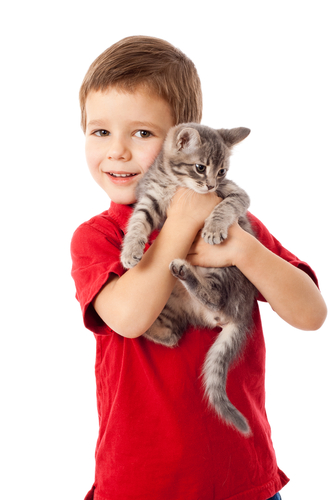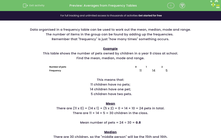How could you organise the following data on the number of pets owned by children in a Year 8 class?
We could use a frequency table!
| Number of pets | 0 | 1 | 2 |
|---|---|---|---|
| Frequency | 11 | 14 | 5 |
Remember that 'frequency' is just 'how many times' something occurs.
This means that:
11 children have no pets
14 children have one pet
5 children have two pets
Data organised in a frequency table can be used to work out the median, mode and range (as well as mean - but that is not our focus today!).

Median
There are 11 + 14 + 5 = 30 children, so the 'middle person' will be the (30 + 1) ÷ 2 = 15.5th person, i.e. the number that would be between the 15th and 16th!
The 15th and 16th person both fall into the second category.
This is because there are 11 people in the first one and 14 in the second one, so the second category is 12th to 11 + 14 = 26th person.
The second category people have 1 pet so the median number of pets is 1.

Mode
This is the one with the highest frequency.
Most children (14) have 1 pet.
So the modal number of pets is 1!
That was easy!
Range
The largest number of pets is 2 and the smallest is 0.
Range is therefore: 2 - 0 = 2

Be careful that it's always the data we are collecting, not the frequency, that will be the final answer!
Ready for some questions?!








